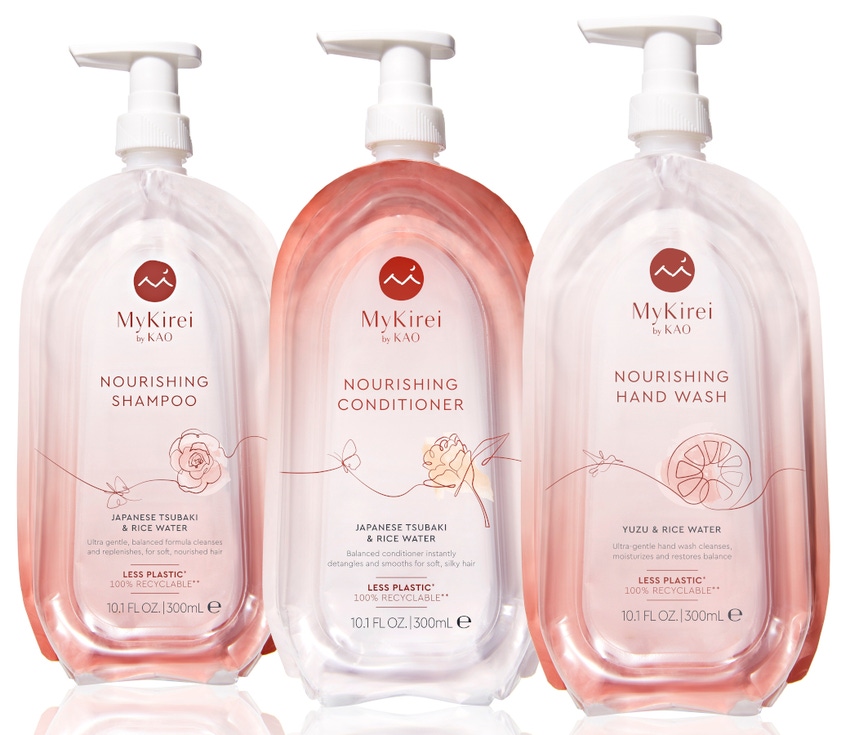
Packaging for the new MyKirei by Kao brand of vegan-friendly, plant-based personal-care products takes its cues from the Japanese Kirei sensibility, which favors sustainability as well as beauty, cleanliness, simplicity, and balance. Delicate graphics decorate the package, which looks like a rigid pump bottle but is, in fact, made from flexible packaging.
MyKirei brand owner Kao USA, based in Cincinnati, says the packaging design uses up to 50% less plastic than traditional bottles. The MyKirei containers have channels on the periphery that are filled with air to make the package rigid. Product is then filled into the package. Kao designed this package in-house; but Packaging Digest has seen similar formats from Procter & Gamble and Aeroflex.
The water-tight package design prevents product contamination, even when the products are used in the shower. The design also lets consumers extract nearly all the product without removing the pump from the container.
Kao is collaborating with TerraCycle on a program that lets consumers recycle MyKirei containers and pumps when the product is gone.
The first wave of MyKirei products comprises three products: shampoo, conditioner, and hand wash. Starting on April 22, 2020 (the 50th anniversary of Earth Day), the products will be sold exclusively on Amazon for $18 each.
Ken Adams, director, package development, at Kao Brands, answers questions from Packaging Digest about the package.
Please describe the air-fill process.
Adams: The package is filled with air with an air tube made of the same material prior to liquid filling and is cut and sealed in this process.
What changes were required on the packaging line to handle this package?
Adams: The package requires a completely new type of packaging line.
How does the package design enable consumers to use nearly every drop of product in the bottle?
Adams: The inner pouch is separate from the outer pouch, so as product is dispensed, the inner pouch collapses inward, dispensing all product and leaving “almost” nothing in the package.
Is the pump inserted by the consumer after buying the package?
Adams: We will sell the package with a pump that the consumer buys the first time; after the first purchase the consumer can purchase a package with no pump and use the original [pump] many times over.
The package and pump are both recyclable through TerraCycle. Can the bottles be recycled via curbside recycling, alternatively?
Adams: Not at this time, which is why we have partnered with TerraCycle. We are also offering refills as another option to cut down on waste.
Does the package provide instructions for recycling via TerraCycle?
Adams: Yes, the information will be on the packaging, on our website, and directly on the Amazon page.
Was this package designed specifically for the ecommerce channel?
Adams: It was designed to reduce the amount of plastic of a traditional bottle and pump, but there are other benefits. This was not specific to the ecommerce channel.
Were there any special packaging needs for the ecommerce channel, and if so, how does this package address them?
Adams: Actually, because of the attached pump, a secondary shipping package is required.
Does the packaging tell consumers that it has 50% less plastic than other bottles?
Adams: Yes, this will be on the package.
How are the bottles decorated?
Adams: The film that the package is made from is directly printed on.
What plastic(s) are the bottle and pump made from?
Adams: Multiple materials.
About the Author(s)
You May Also Like




